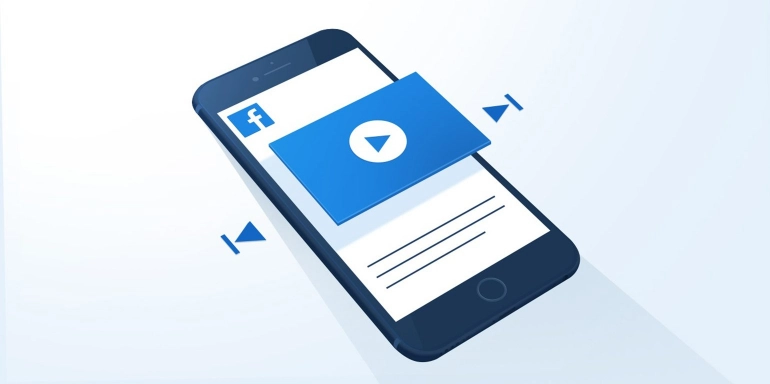Facebook Retargeting Strategy For An Ecommerce Business: A Step-by-Step Guide
Facebook retargeting can be one of the most effective ways to convert your eCommerce website visitors into paying customers. When used correctly, it allows you to show ads to people that have visited your site and add them back to your email list. In this post, we will explore a few different Facebook retargeting strategies and some actionable tips
What is Facebook Ecommerce Retargeting?
Retargeting is a marketing method that allows you to show ads to people who have already visited your website. This way, you can re-engage them with the products they were interested in when visiting your site.
Ecommerce retargeting takes this concept one step further by allowing you to show ads based on specific actions that visitors took on your website. These activities include adding an item to their cart or adding it to their wishlist.
Facebook Ecommerce Retargeting allows you to target people who have already been to your store and show them ads again. You can target specific products/categories/services etc.. By segregating your audience, you can reach just those interested in your product without wasting money on irrelevant clicks. Again this will reduce costs, as well as increase conversions and sales.
How to Set Up a Retargeting Strategy on Facebook
eCommerce brands are exploring the world of Facebook retargeting. With an ad spend of $21 billion and counting, it’s easy to see why.
1- Set Up a Facebook Retargeting ad
Once you've created an audience, it's time to create an ad. Make sure it is attractive. The ad will be the first thing people see when they visit Facebook after visiting your site.
You can choose from different formats like
- carousel ads: This includes multiple images
- video ads: This show short, engaging videos
- photo ads: show one image).
The size and placement of these ads will depend on which format you choose. But keep in mind that video ads tend to perform better than other ad formats.
2- Set Up a Facebook Retargeting Pixel
The Facebook pixel is a Javascript code that you or your web developer puts at the backend of your website to track the activities of your visitors. Once you install the code, it will collect data about your site visitors and send it to Facebook.
Here's how to set up a Facebook pixel for retargeting:
- Step 1: Go to the Facebook website.
- Step 2: Click 'Create Pixel'.
- Step 3: Choose an existing website or create a new one. If you want to create a new one, choose 'Create Custom Event .'Then select 'Website' from the drop-down menu at the top of the screen and click 'Create.'
- Step 4: You will now see a screen with some options for tracking different actions on your site. For example, if you want to track people who add products to their basket on your eCommerce site, select 'Add To Cart' from the drop-down menu at the top of the screen and click Save Changes.
3- Create a Custom Audience
You can create a custom audience by uploading your customer list or using the Facebook Pixel to capture visitors' information. These are two of the most commonly used methods for creating a custom audience, but there are other ways to do so.
For example, you can create a lookalike audience based on people who have visited your site and then target similar people with ads on Facebook. You can use this strategy if you want to reach potential customers who haven’t yet converted into buyers and encourage them to make purchases on your website.
Another option is targeting people who have added items to their cart but did not complete the purchase during their last visit. Use this strategy to target those who may be interested in purchasing from your store again in the future once they're ready for it.
5- Retarget visitors of certain pages or products
Facebook pixel is a tool that allows you to create custom audiences based on people who visit certain pages and products. You can track all the actions that your visitors take on your website and then follow up with them with relevant content and offers.
Here are some ways you can use Facebook ecommerce retargeting:
-
Retarget people who have purchased from you
This is the most common and obvious strategy. If a person has already bought from your ecommerce store, they are a much higher quality lead than someone who hasn't made a purchase yet. By targeting these people, you can re-engage them and increase sales.
-
Retarget people who have visited specific pages
This strategy is more advanced because it requires setup in advance. You'll need to add tracking pixels to certain product pages so that when people visit those pages, they're added to an audience.
-
Retarget people who have purchased from you
Show ads to these customers for up to a year after their purchase with an “upsell” ad that promotes related products or services. This kind of ad is designed to encourage additional purchases from existing customers.
-
Retarget people who have abandoned the shopping cart
Show ads to people who added items to their cart but didn't complete their purchase. This means that if someone adds items to their cart but doesn't complete their purchase, they will still be targeted with ads that encourage them to finish their order.
-
Reactivate old visitors
Show ads to people who have visited the site within a certain time period (e.g., 30 days, 60 days) but not engaged with any other ad campaigns or offers from your company in that time period.
6- Set Up a Conversion Window
When setting up your retargeting campaign, you need to set up a conversion window. This will tell the platform when you want to target people who have visited your site.
In most cases, you will want to set up a conversion window of between 15 and 30 days. This means that the platform will remember people who visited your site and target them on other websites with ads. This is an effective strategy because it allows you to bring back past customers while also converting new ones.
Once you have set up your conversion window, then it's time to choose which products you want to promote. You don't want all of them because this will just clutter up your ad with too many different products and make it look like spam instead of an ad for something specific. Instead, pick 2-4 products that fit into the same niche as one another so that they can work together without competing against each other.
7- Set Up a Facebook Retargeting Landing Page
Once you've set up the Facebook Pixel on your website, the next step is to create a page where you can send visitors who haven't converted. This page is known as a retargeting landing page.
If you have multiple products or services, it's good to build a separate landing page for each one. For example, if you offer both men's and women's clothing, you could have separate landing pages for each product type. Separating your landing page will create more targeted ads and drive more sales.
Once your visitors arrive at your Facebook retargeting landing page, they should see a clear call to action. Your CTA should be like "Shop Now" or "View More Products."
Once they click on the CTA, prospects will land on a new page with more information about the product. The landing page's content should direct visitors to make an informed decision on a purchase.
How to Maximize Your Facebook Retargeting ad Performance
The most important thing you can do to maximize your ad performance is keeping it simple. Don’t overload your ads with too many elements that may distract the user from clicking on them. Here are ways to make sure you are getting the best out of your Facebook ecommerce retargeting strategy:
- Use a coupon code: If you're selling a product, use a coupon code in your ad that will allow users to get 20% off or something similar. You'll see an increase in conversions because users will see that there's an incentive for them to buy from your store.
- Use a carousel ad: Carousel ads allow users to scroll through multiple images in one ad unit instead of having to click on each image individually. This increases engagement and makes it easier for users to spend more time looking at your products than they would if they had to click through several images individually.
- Use dynamic ads: Dynamic ads allow you to change certain elements such as price or product name depending on how much inventory you have left in stock or how much inventory is left at competitors' stores. This allows you to be more competitive with pricing and helps increase sales by getting more people interested in buying right away.
- Use relevant images and video: The image you use in your retargeting ads should be relevant to the product or page that a user has previously viewed. It should also match the messaging you used in your original ad when targeting those users initially.
- Use call-to-action (CTA) buttons: A CTA button encourages people who are browsing around on your site to make a purchase by clicking on it and completing their order right away. These buttons can include words like "Shop Now" or "Learn More." The wording of the button depends on what action you want customers to take after seeing your ad.
- Use a countdown timer: A countdown timer is a type of promotion that encourages visitors who land on your site from an ad to complete their purchase before the offer expires. Countdown timers are currently one of the most popular types of retargeting promotions because they encourage people to make purchasing decison faster.
- Use a discount code: A discount code is a great tool for increasing click-through rate (CTR) and conversion rate (CVR). It helps create urgency with an expiration date and gives customers an incentive to purchase from your site immediately before the deal expires.
Automate your Facebook Retargeting Strategy
Facebook retargeting is a great way to grow your ecommerce business, but it can be a lot of work. Thankfully, there's a better way: automated marketing tools that allow you to create audiences, draft ads and execute them automatically. Use ConvertedIn to set your Facebook eCommerce retargeting campaign and you won’t spend hours every week keeping your retargeting campaigns up-to-date. The tool does all the heavy lifting for you. You can focus on the other parts of running an eCommerce business (like shipping out orders).

